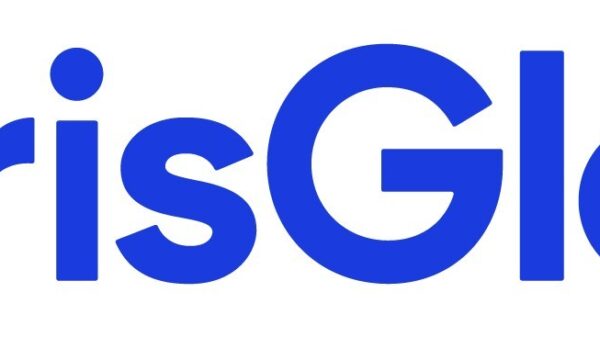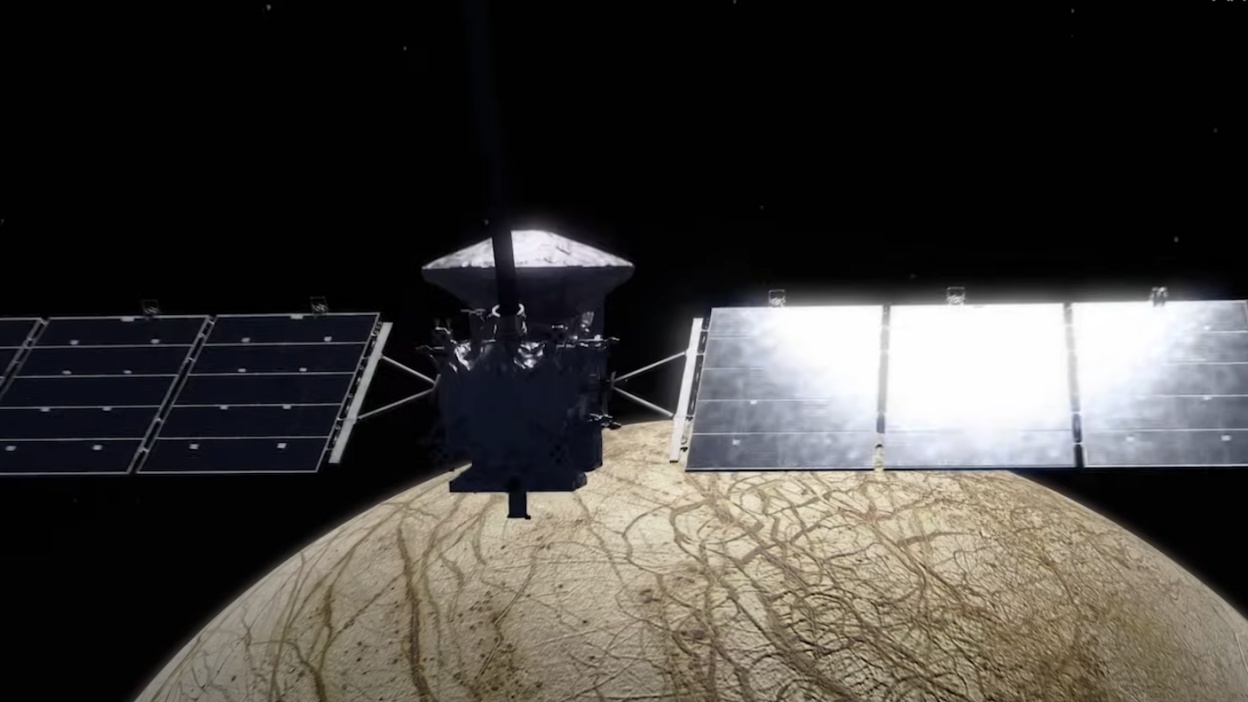NASA’s Europa Clipper spacecraft has captured a remarkable photograph of Mars alongside its two moons, Phobos and Deimos, during its journey to the outer solar system. On February 28, 2024, from approximately 560,000 miles away, the uncrewed spacecraft utilized its infrared camera to take 200 individual frames over a period of 20 minutes. This stunning image not only showcases the trio of celestial bodies but also serves as a vital opportunity for mission engineers to calibrate the spacecraft’s thermal imaging capabilities.
The photograph features Mars prominently in the center, with the two moons appearing as faint dots. Phobos, the larger and innermost moon, is positioned closer to Mars, while Deimos is visible in the upper left corner. Due to their dimness—each moon is about 250 times fainter than Mars—engineers enhanced the image to make them stand out. Within the Martian landscape, a notable dark area near the northern polar cap indicates temperatures plummeting to around -190 degrees Fahrenheit. Additionally, Elysium Mons, a giant volcano on Mars, can be seen in the circular region of the image.
Rare Celestial Alignment and Scientific Insights
The alignment of Mars and its moons is a rare event. The last time Phobos and Deimos were photographed together was in November 2009 by the European Space Agency’s Mars Express orbiter. This previous image required extensive planning and precise orbital knowledge, highlighting the challenges in capturing such celestial phenomena. Scientists continue to study Phobos and Deimos, which are among the smallest moons in the solar system. Both moons have been described as “blacker than coal” and resembling “battered potatoes,” according to ESA. Phobos, measuring about 14 miles in diameter, orbits Mars three times daily, while Deimos, slightly smaller at seven to eight miles wide, takes around 30 hours for a complete orbit.
The origins of these moons remain a mystery. Some researchers speculate that they may be captured asteroids, while others suggest they could be remnants of Mars itself, possibly ejected from the planet during a significant collision billions of years ago.
Technological Advancements and Future Missions
The image from Europa Clipper was taken using the Europa Thermal Emission Imaging System, or E-Themis, which is designed to detect heat rather than visible light. This technology will play a crucial role in the spacecraft’s primary mission: to explore Europa, one of Jupiter’s moons believed to possess a subsurface ocean that may harbor conditions suitable for life. The instrument aims to identify areas where Europa’s internal ocean interacts with its icy outer layer, providing insights into potential habitability.
In March 2024, the spacecraft utilized Mars’ gravity in a maneuver known as a gravity assist to adjust its trajectory toward the outer solar system. This close encounter not only allowed for instrument testing but also offered a chance to admire the planetary neighbor. Shortly after, on March 12, another spacecraft, part of the European Hera mission, made a similar gravity assist as it prepares to study the asteroid that NASA intentionally impacted three years ago.
Launched from Florida in October 2024, Europa Clipper is expected to arrive in the Jupiter system in 2030. During its mission, it will conduct nearly 50 flybys of Europa, gathering critical data regarding its surface, interior, and chemical composition. If evidence of habitability is confirmed, a subsequent mission could be initiated to search for signs of life.
The captivating image captured by Europa Clipper not only highlights the beauty of the cosmos but also underscores the importance of continued exploration and scientific inquiry into our solar system.






























































